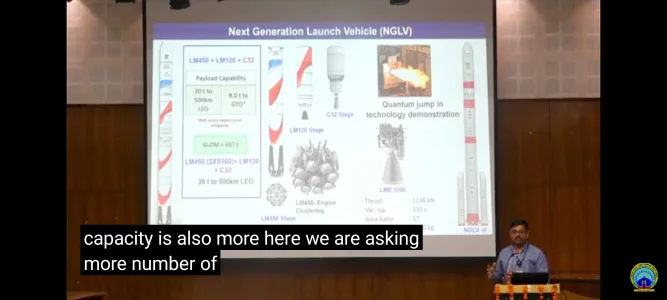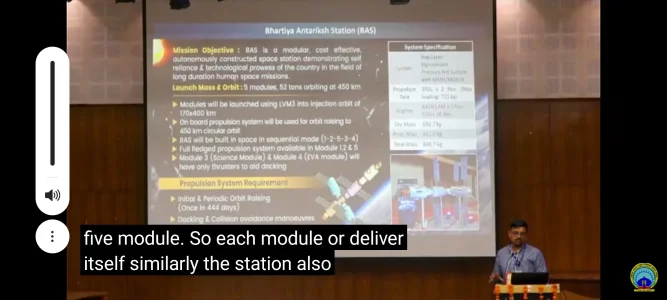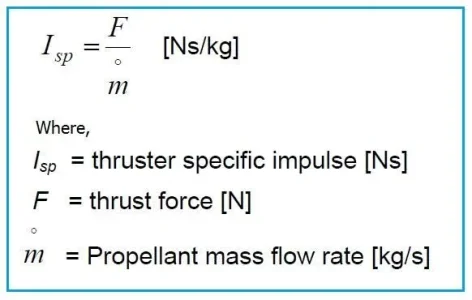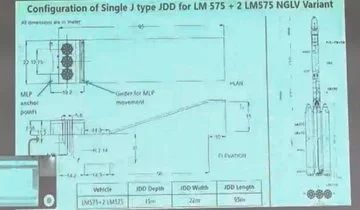My question was in general and not in particularly for NGVL. I didn't know where to ask it and decided that this thread would be close enough
No worries mate

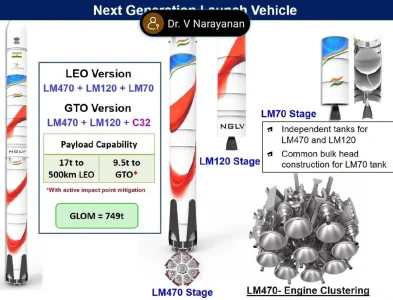
Indrani actually didn't answer why 3 stage are required unlike Somnath ji who did.
Why it makes perfect sense to me. I have tried to simplify his explanation for you in my 3rd point
Now I am a bit confused because distance between Sriharikota and Thailand or Malaysia is approximately 2000km which is huge. For example a much bigger rocket than NGLV like new glenn with a 13.5t gto capacity only makes a 620 miles (1000km) down range landing on a barge in sea. Our requirement LV is much lower around 4-6t to gto. So our should be way less
Here are my understanding of why we need 3 stages in NGLV by combining the info from both Indranil's thread and Somnath Sir's interview
1. Better Payload fraction compared to a 2 stage desgin
2. We dont want parts to end up over SE asia
3. Greater Flexibility in launching to both LEO and GTO
Forget reusability for a second and only focus on the expended mode for now
Lets assume instead of being a 3 stage rocket this is a 2 stage one, now you have 2 scenarios either merge LM 470 and LM 120 in one and create a LM 590 or Merge LM 120 and LM 70 in a LM 190
1. Since we use a Gas generator cycle engine with Methane our combo is the most inefficent (Least Isp) compared to Merlin engine a Gas Generator cycle engine with Kerosene (More energy dense) and lightweight alloys for 1st stage and BE 4 a FFSC engine (more efficient engine) with Methane for 1st stage.
Our LME 590 as a whole would less efficient and heavier than falcon 9 or New Glenn first stage, so what do we do to overcome this inefficiency break LM 590 into 2 parts and shed the dry mass (dead weight) LM 470 as soon as possible to lighten up the rocket.
1a. So now you say leave LM 470 as it is and just use a LM 190, but remember LM 190 still does not have escape velocity because LM 470 can't provide enough thrust for that alone so LM 190 will not only have to push itself to escape velocity but also insert itself in orbit
To achieve this the 2nd stage will have to be quite big to have enough propellant to provide the needed thrust and thus will have a lot of dead weight after the stage achieves escape velocity
And this much dead weight will maake the LM 190 stage inefficient so what do we do, break this 2nd stage in 2 parts in such a way that as soon as we reach escape velocity the dead weight is expended/shed off and that's how you get a LM 120 and a LM 70, as soon as we reach orbital velocity the LM 120 stage will be expended and we will be left with a much lighter LM 70 to take us to LEO and insert our payload in the desired orbit.
2. Now you might ask why LM 470 and LM 120 and not LM 550 and LM 40 or LM 400 and LM 190, this is where debris falling over SE asia comes into play, we want our 1st stage to be as big as possible so long its debris will fall in the Indian Ocean and not over SE Asia
Similrly we want our 2nd stage to be as small as possible so that it either burns up in the atmosphere or falls in the ocean,
and only LM 470 and LM 120 form the perfect ratio that fulfills both these conditions
FYI, During the descent phase the 1st stage travels a lot of distance too, so if it seprated from the rocket near Andaman sea you can bet it will fall in the bay of bengal some 1000 km away so how far downrange from the launch site the 1st stage lands is not an the right way to look at it, think about where will the debris fall in the expendable mode, even new Glenn's or Falcon 9's debris falls over 2000km downrange nevermind where will the 1st stage land has a lot of orbital mechanics baked into it so you can't just directly compare NGLV to Falcon 9 or New glenn on how far away the 1st stage will land.
A New glenn launched from SHAR will land very differntly than one launched from Vandenberg
3. To put it simply CE engines are more costly but also more efficient (higher specific impulse) the LME engines but this efficiency does not negate the cost benefit of slightly inefficient but cheaper LME engine in LEO however in GTO it definitely does and that's why by breaking the 2nd stage into 2 parts you can optimize for both of these orbits based on our needs. want to send a payload to LEO use a LME powered LM 70 3rd stage, want to send a payload to GTO use a CE powered C32 3rd stage.

As you can see Falcon 9 is a LEO optimized rocket where as Ariane 5 is a GTO optimized rocket and ISRO is trying to optimize NGLV for both of these orbits and this is exactly what Indranil was trying to explain in his twitter thread.
Rocketlab , SpaceX, blueorigin recieve the know-how & know-why from NASA, that's how they are able to do Staged Combustion Engine in 1st attempt
For Eg, Falcon9's Merlin-1D is actually a derivative of a NASA engine, these startups use decades of knowledge gained during the space race, while we have to gain know-how & know-why on our own , hence ISRO choose Gas generator cycle for LME-1100, since they already have the know-how & know-why of GG cycle engines , to reduce the development time,cost & risk...
After we master the Semi Cryo engine SE-2000, ISRO will gain Know-how & Know-why for ORSC engines, then they will develop ORSC based LOX-METHANE engine LME-3000
our Starship equivalent will use a FFSC LME 3000


 threadreaderapp.com
threadreaderapp.com






